Special Report
Countries Doing the Most (and Least) to Protect the Environment
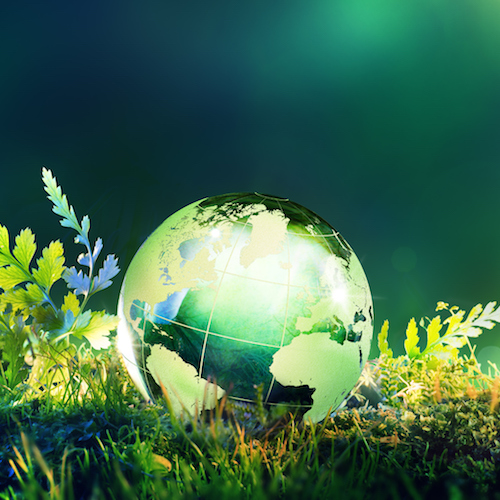
Published:
Last Updated:

Unsafe water and poor air quality were responsible for a combined 6.8 million deaths worldwide in 2013, or more than one in every 10 preventable deaths.
While most of these environmental deaths likely occurred in the poorest parts of the world, the relationship between a country’s wealth and its environmental stewardship is more complex. Each nation has different priorities in protecting against both short-term environmental risks like water and air pollution, and long-term threats to biodiversity and the climate. To determine the countries doing the most to protect the environment, 24/7 Wall St. reviewed environmental performance by country from Yale University’s 2016 Environmental Performance Index.
[in-text-ad]
While economic development can ultimately improve environmental conditions, it can also increase the number of human health hazards at certain stages in the process. As a country grows wealthier, governments and private citizens invest in sanitation infrastructure such as water treatment facilities that make the environment less hazardous for humans, ultimately resulting in less death. In the process of growing wealthy, however, a country increases industrial production, urbanization, and motorized transportation, which can all increase air pollution and negatively impact the environment.
Click here to see the countries doing the most to protect the environment.
Click here to see the countries doing the least to protect the environment.
The impact economic development has on a nation’s environmental health can be partially determined by public policy. Finland, the top ranking country, for example, set in 2014 a goal to reach carbon-neutrality 2050. Today, an estimated 24% of all energy consumed in Finland is from alternative or nuclear sources, one of the larger shares of any country.
In addition to air quality, a number of environmental factors are key to the health of an ecosystem and its inhabitants. Clean water, a high degree of biodiversity, and climate stability all vary heavily by geography and can be managed to some degree by public and private investment. As a consequence, many of the top ranked countries are also fairly wealthy. All of the 10 most environmentally conscious countries are also among the 40 wealthiest nations. While 7 of the 10 most environmentally conscious countries designate at least 10% of their territory for environmental conservation, less than 4% of landmass in half of the 10 least environmentally conscious nations is under such governmental protection.
Typically, government is the largest and most effective actor in environmental protection. In many of the countries plagued by war and famine in Sub-Saharan Africa, however, sustainable development has taken a backseat to fulfilling the basic needs of its residents.
While developing countries have achieved the greatest gains in environmental health over the last decade, the poorest parts of the world are still subject to some of the worst environmental conditions on the planet. Only one of the 10 least environmentally conscious countries has a GDP per capita exceeding $4,000.
In 7 of the 10 least environmentally conscious countries, the entire population is exposed to levels of air pollution that exceed safe guidelines set by the World Health Organization. Until these countries can establish some governmental stability and and bring widespread violence and famine to an end, sustainable development will likely remain far off.
To determine the most environmentally conscious countries, 24/7 Wall St. reviewed Yale University’s 2016 Environmental Performance Index. The EPI ranks countries based on their performance in two areas: protection of human health and protection of ecosystems. Both factors consist of several subfactors. The index combines a country’s performance in each category and assigns it an overall score. We also reviewed supplementary measures related to EPI themes — such as health impacts, air quality, water and sanitation, water resources, agriculture, forests, fisheries, biodiversity and habitat, and climate and energy — from the World Bank for 2015 or the most recent period available. Data on GDP per capita also came from the World Bank and is in current international PPP dollars for 2015.
These are the countries doing the most (and least) to protect the environment.
Countries doing the most to protect the environment:

10. France
> GDP per capita: $41,017
> Pop. exposed to unsafe air pollution levels: 92.1%
> Area with gov. protections: 25.7%
Nearly 50% of all energy consumption in France comes from alternative and nuclear energy sources, the largest share of any country other than Iceland ot Paraguay. France’s nuclear power generates approximately 78% of France’s electricity production, approximately 20 percentage points more than any other country worldwide.
The preservation of species and habitat is a crucial component in maintaining biodiversity, which is critical for the planet’s health. In France, the newly established French Agency for Biodiversity will help push the preservation agenda for both the country and the world. Currently, 25.7% of France’s terrestrial and marine areas are protected, more than the 23.8% global average and one of the largest shares in the world.
[in-text-ad]
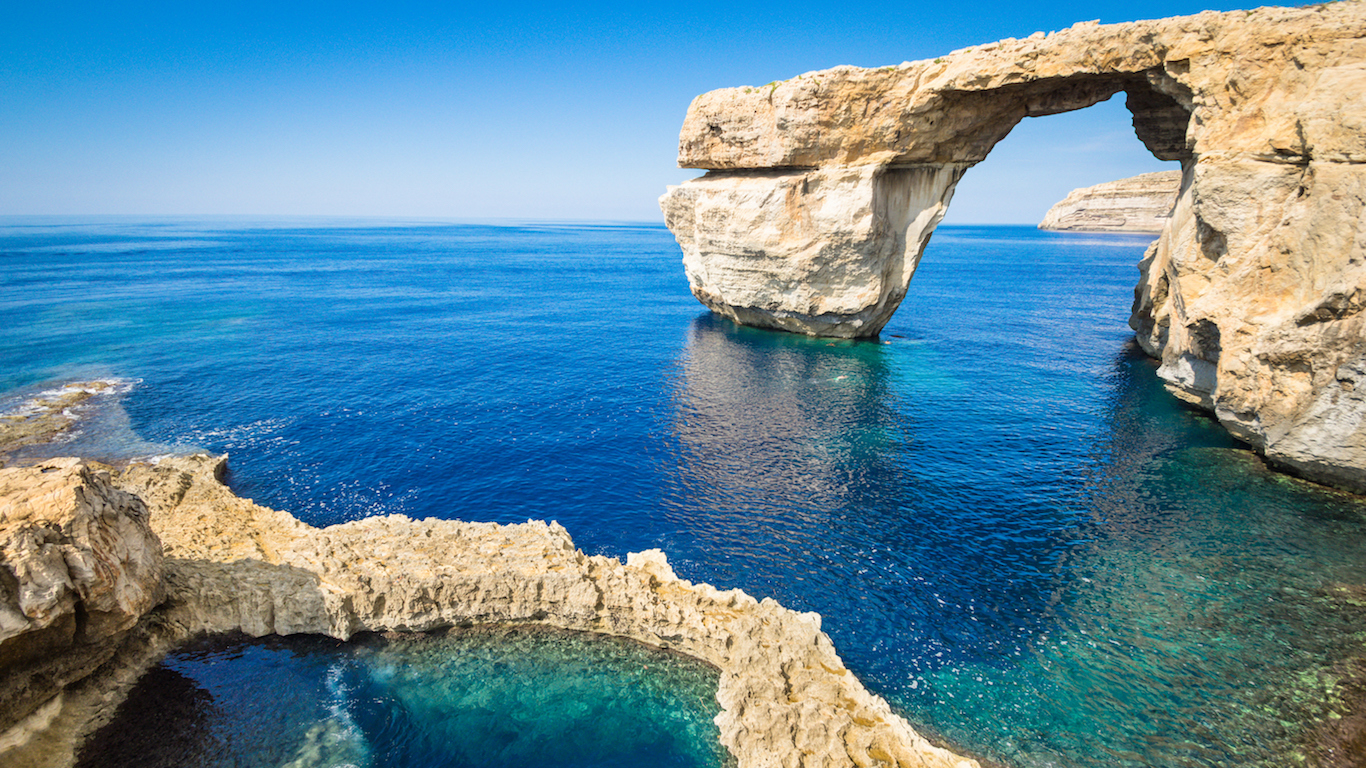
9. Malta
> GDP per capita: $33,995
> Pop. exposed to unsafe air pollution levels: 100.0%
> Area with gov. protections: 0.5%
While the the United Nations recognizes clean drinking water as a basic human right, the organization estimates that as much as 8% of the world’s population lacks proper access to an improved water source. Malta is one of only two countries in the world where 100% of all wastewater is treated, and the entire population is connected to a centralized wastewater treatment facility.
Malta is also notable for its biodiversity. A small island nation, Malta is home to roughly 4,500 distinct plant and animal species, 85 of which can only be found on the island. Through the Malta Environment & Planning Authority’s National Biodiversity Strategy & Action Plan, the nation protects its unique array of flora and fauna. Only two mammal species on the island are threatened, less than nearly any country worldwide.
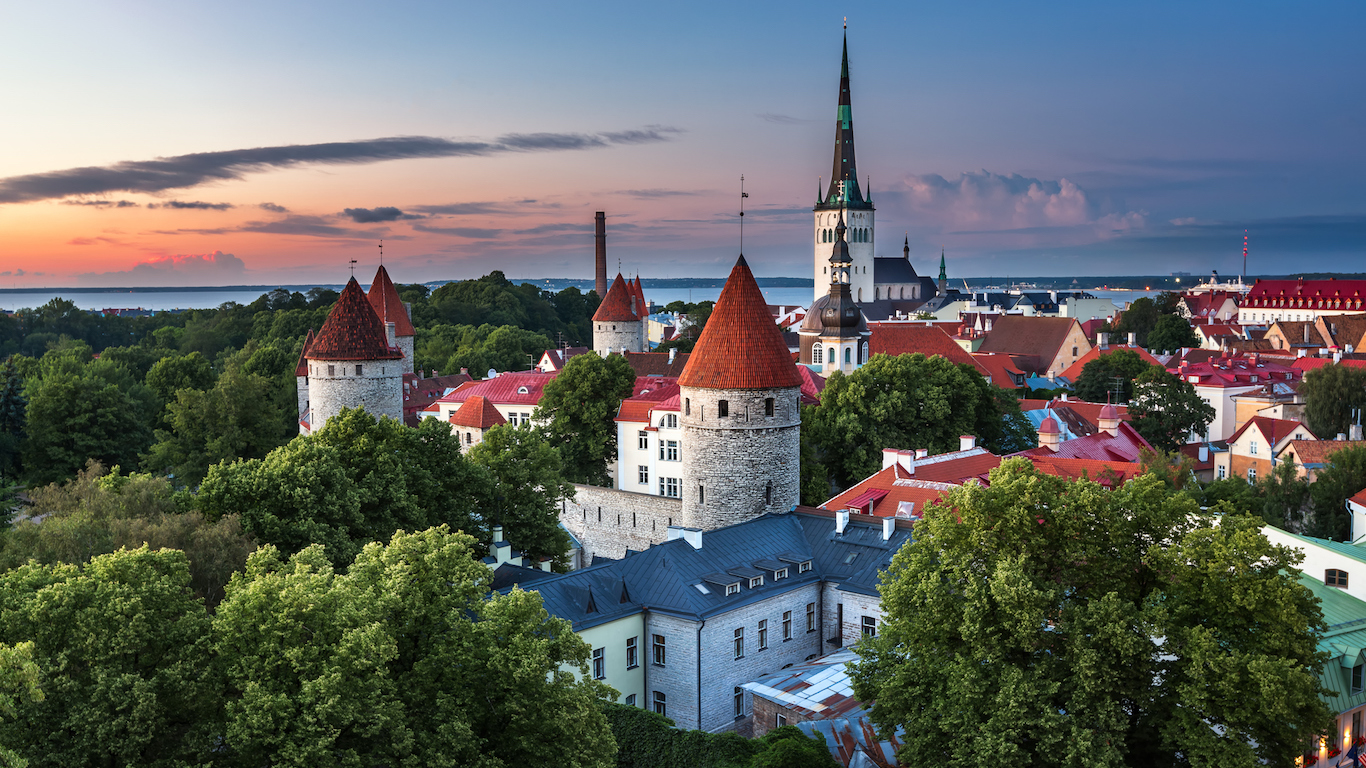
8. Estonia
> GDP per capita: $28,988
> Pop. exposed to unsafe air pollution levels: 15.3%
> Pct. protected land: 19.9%
Environmental protection policies were established in Estonia after gaining independence from the Soviet Union in 1991 and adopting a new constitution the following year.
Estonia’s exceptionally low fossil fuel consumption is one indication of environment-friendly policies in the small Baltic nation. In stark contrast to other developed nations, just 12.3% of all energy consumption in the country comes from fossil fuels. This is one of the smallest such shares in the world. For reference, 82.8% of U.S. energy consumption comes from fossil fuels.
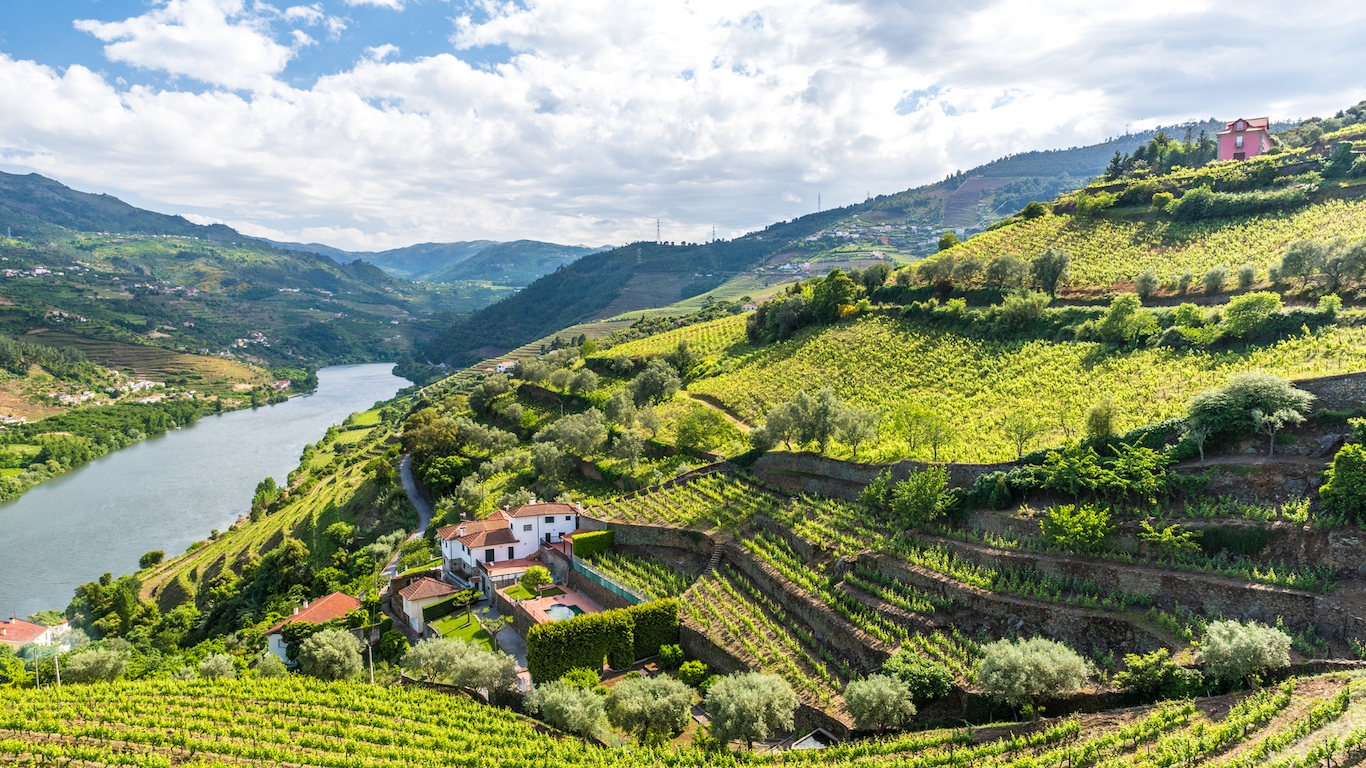
7. Portugal
> GDP per capita: $29,718
> Pop. exposed to unsafe air pollution levels: 24.2%
> Pct. protected land: 1.9%
Nitrogen is commonly used in fertilizers to increase crop yield. While nitrogen can increase agricultural productivity, it can also have negative environmental effects, depleting the ozone, reducing air and water quality, and speeding climate change. Portugal is one of only 20% of countries meeting EPI targets for nitrogen use efficiency, which limits runoff and the resulting environmental damage.
Despite some progressive policies, Portugal’s environmental record is not exemplary across the board. The country lost nearly one-quarter of tree cover in forested areas between 2000 and 2014, more than anywhere else on Earth during that period.
[in-text-ad-2]
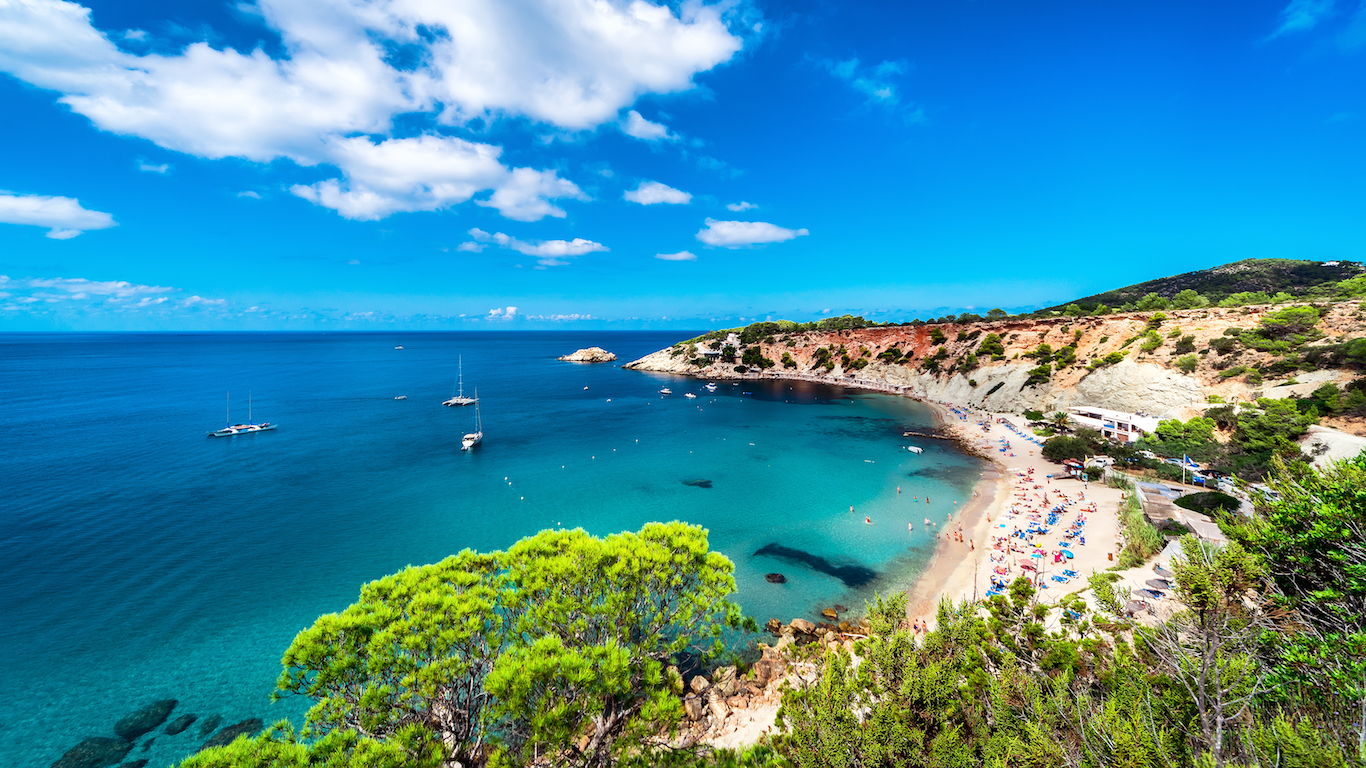
6. Spain
> GDP per capita: $34,727
> Pop. exposed to unsafe air pollution levels: 28.1%
> Pct. protected land: 10.2%
Spain’s relatively clean energy profile sets it apart from most other countries. Approximately 21% of Spain’s total energy use comes from nuclear and other alternative sources. In comparison, nuclear and alternative energy accounts for only about 12.3% of the United States’ energy mix. The country has also managed to reduce its reliance on fossil fuels by 21% since 1969. U.S. fossil fuels reliance, on the other hand, fell by only 14% over the same period.

5. Slovenia
> GDP per capita: $31,990
> Pop. exposed to unsafe air pollution levels: 100.0%
> Pct. protected land: 54.0%
Many countries choose to preserve wildlife by designating protected areas. About 15% of the U.S. geographic area is under such protection. With 54% of its landmass under such protection, Slovenia is the only nation to protect over half of its territory.
Slovenia’s wealth of fast-flowing rivers and elevation changes has allowed the country it to build a substantial hydroelectric energy infrastructure. Only 60% of the nation’s energy consumption comes from fossil fuels, compared to approximately 83% of U.S. energy consumption.
[in-text-ad]
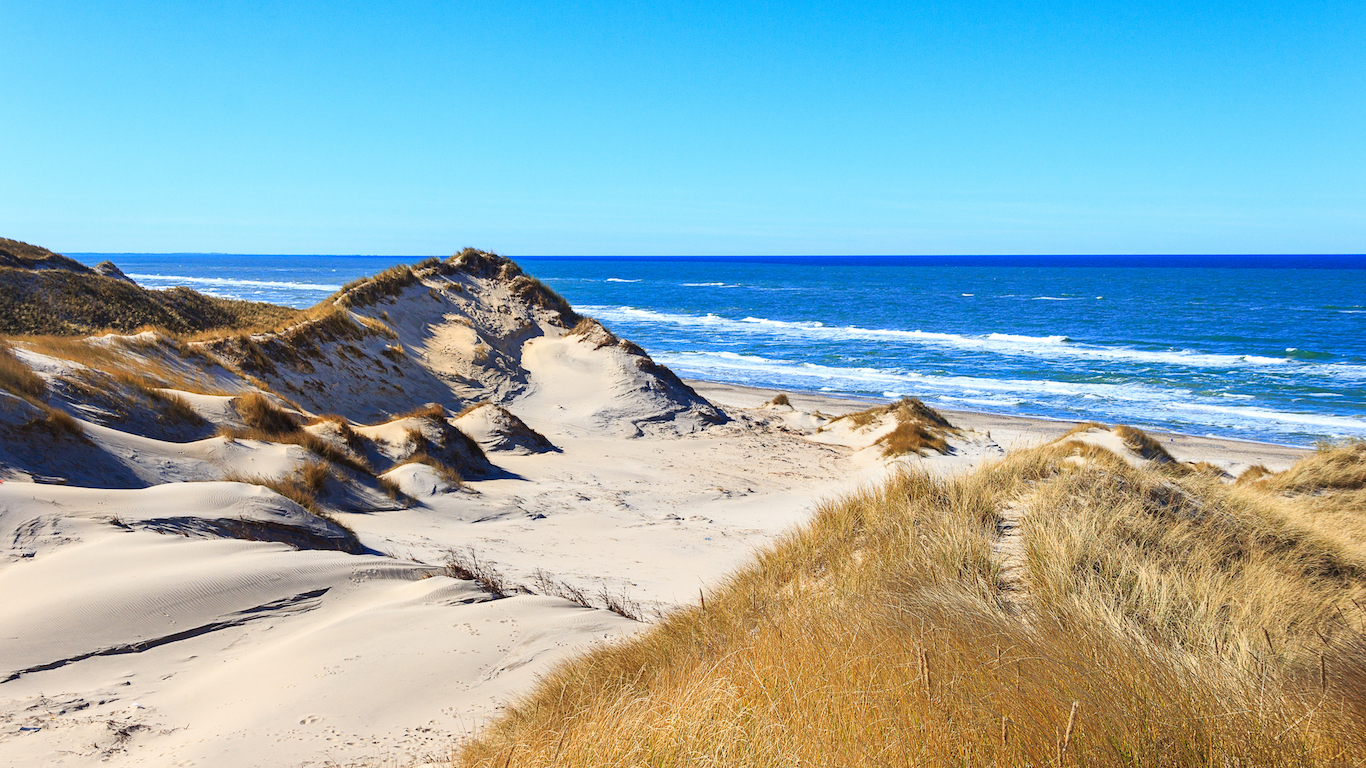
4. Denmark
> GDP per capita: $49,020
> Pop. exposed to unsafe air pollution levels: 78.8%
> Pct. protected land: 18.0%
Denmark is one of the most environmentally-conscious nations on earth, largely due to its energy profile. The small Scandinavian nation has been building wind turbines since the late 70s, and today it has one of the most robust wind energy generation infrastructures in the world. Denmark’s wind turbines generated over one-third of the country’s total energy use in 2016. The country currently projects wind power will provide 50% of energy use by 2020 and will help the nation become 100% free of fossil fuels by 2050.
Denmark also uses less energy, relative to its size and industrial development, than most countries. Per capita electricity consumption in the country is just 5,900 kWh, higher than many developing nations, but less than half that of the United States and other affluent nations.

3. Sweden
> GDP per capita: $47,862
> Pop. exposed to unsafe air pollution levels: 0.0%
> Pct. protected land: 13.0%
Nitrogen is commonly used in fertilizers to increase crop yield. While nitrogen can increase agricultural productivity, it can also have negative environmental effects, depleting the ozone, reducing air and water quality, and speeding climate change. Swedish is one of only 20% of countries meeting EPI targets for nitrogen use efficiency, which limits runoff and the resulting environmental damage.
Sweden’s energy mix is also relatively favorable to the environment. Approximately 45% of Sweden’s energy consumption comes from nuclear and alternative sources. In comparison, the United States derives only 12.3% of its energy from alternative sources.
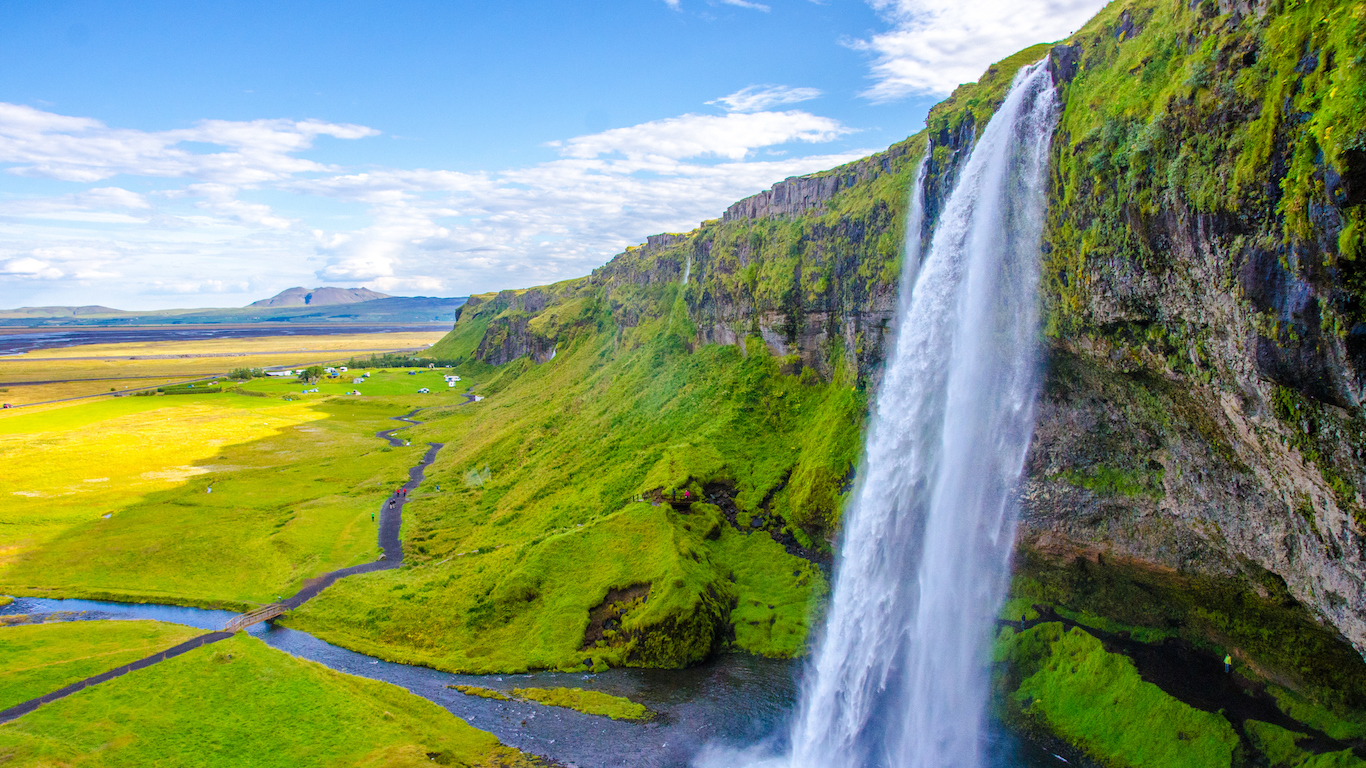
2. Iceland
> GDP per capita: $47,717
> Pop. exposed to unsafe air pollution levels: 0.0%
> Pct. protected land: 2.3%
Iceland derives nearly all of its electricity and heat from renewable energy sources — effectively eliminating carbon emissions. Hydropower provides the majority of the country’s electricity, and geothermal energy generates most of the country’s heat. Heat and electricity production can be major sources of greenhouse gases. In the United States, about 46% of all carbon emissions come from electricity and heat production.
The country’s energy infrastructure benefits residents’ health. None of Iceland’s 331,000 residents live in areas exposed to air pollution levels that exceed the World Health Organization’s guidelines.
[in-text-ad-2]
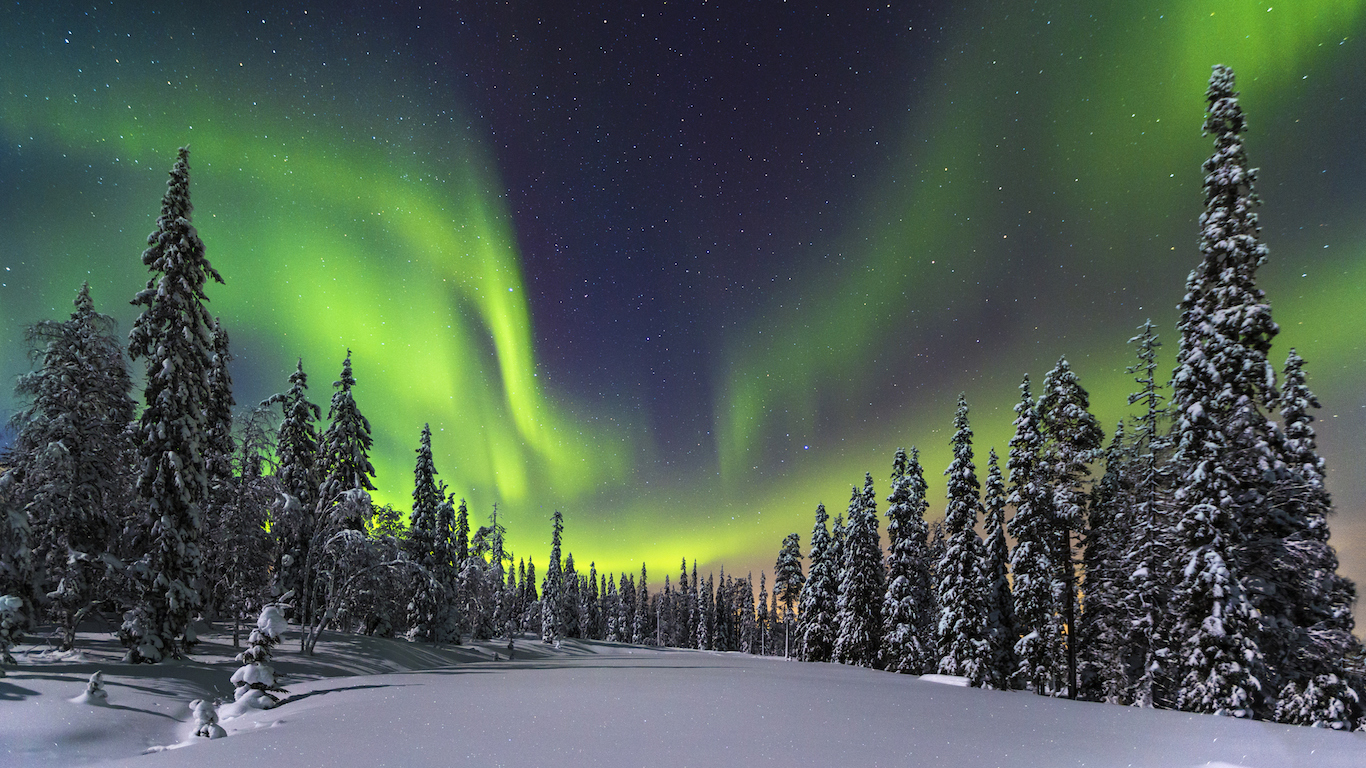
1. Finland
> GDP per capita: $42,309
> Pop. exposed to unsafe air pollution levels: 0.1%
> Pct. protected land: 14.1%
Finland passed in 2014 a visioning document that sets carbon-neutrality as a goal by 2050. The Nordic country is well on its way. Approximately 24% of all energy consumed in Finland is from alternative or nuclear sources, one of the largest shares of any country and not far from the nation’s goal of 38% by 2020. Clean energy has a positive effect on both the health of the planet and its citizens. An estimated 3.5 billion people worldwide are exposed to unsafe air quality, which was responsible for one in every 10 global deaths in 2013. In Finland, just 0.1% of the population is exposed to unsafe air pollution annually, nearly the least of any country worldwide.
Countries doing the least to protect the environment:
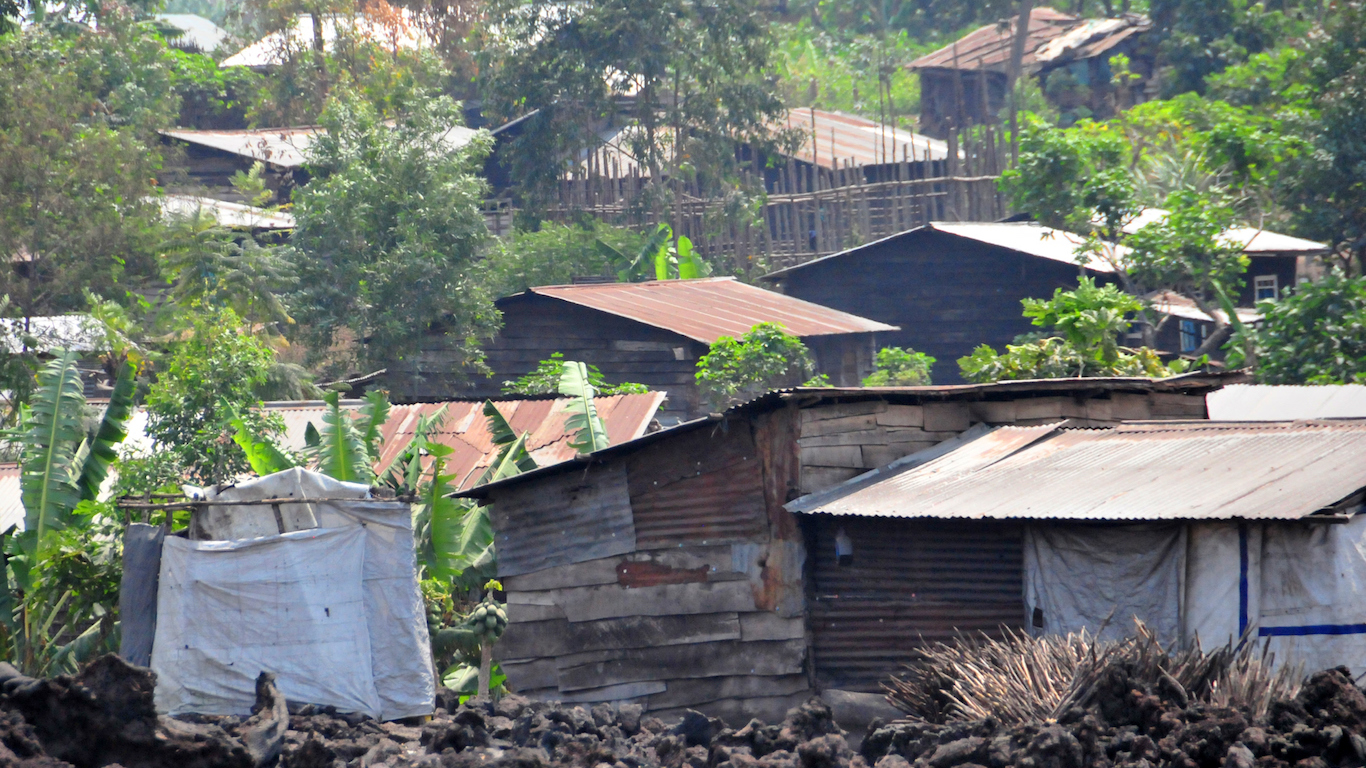
10. Democratic Republic of the Congo
> GDP per capita: $6,381
> Pop. exposed to unsafe air pollution levels: 100.0%
> Pct. protected land: 31.8%
Managing the environment requires a well-functioning government. The Democratic Republic of the Congo is one of several African nations where governance problems and long running histories of economic and civil unrest have hindered environmental stewardship. While minerals — many of which are used in smartphones — drive the DRG’s economy, they also remain at the root of civil war and corruption. The Central African nation struggles to provide basic services to its citizens, let alone protect its habitats from pollution. Like most countries at the bottom of this list, virtually every DRC resident is exposed to unsafe levels of air pollution. The WHO estimates that 107,780 Congolese died from indoor and outdoor air pollution in 2012.
[in-text-ad]
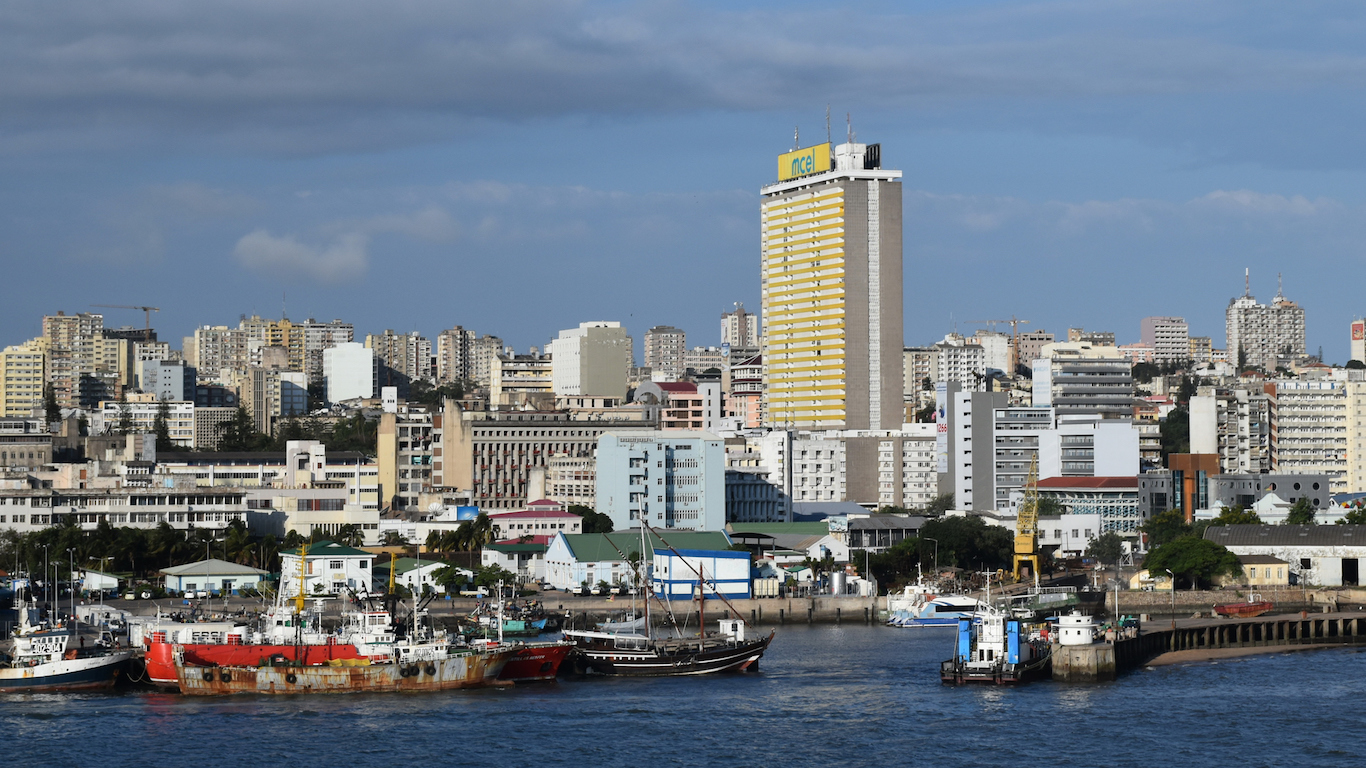
9. Mozambique
> GDP per capita: $1,192
> Pop. exposed to unsafe air pollution levels: 99.7%
> Pct. protected land: 10.9%
Typically, developing nations have greater issues with water quality and air pollution. In Mozambique, one of the poorest nations in the world, both types of pollution are a serious issue. The population has high exposure to particulate pollution, ranking 22nd worst among countries with available data. Only 4.4% of Mozambique’s population has access to clean sources of fuel for indoor cooking, which greatly contribute to indoor air pollution. The WHO estimates that 15,145 Mozambicans died from indoor air pollution in 2012. Additionally, only 1% of the population is connected to a centralized wastewater treatment facility.
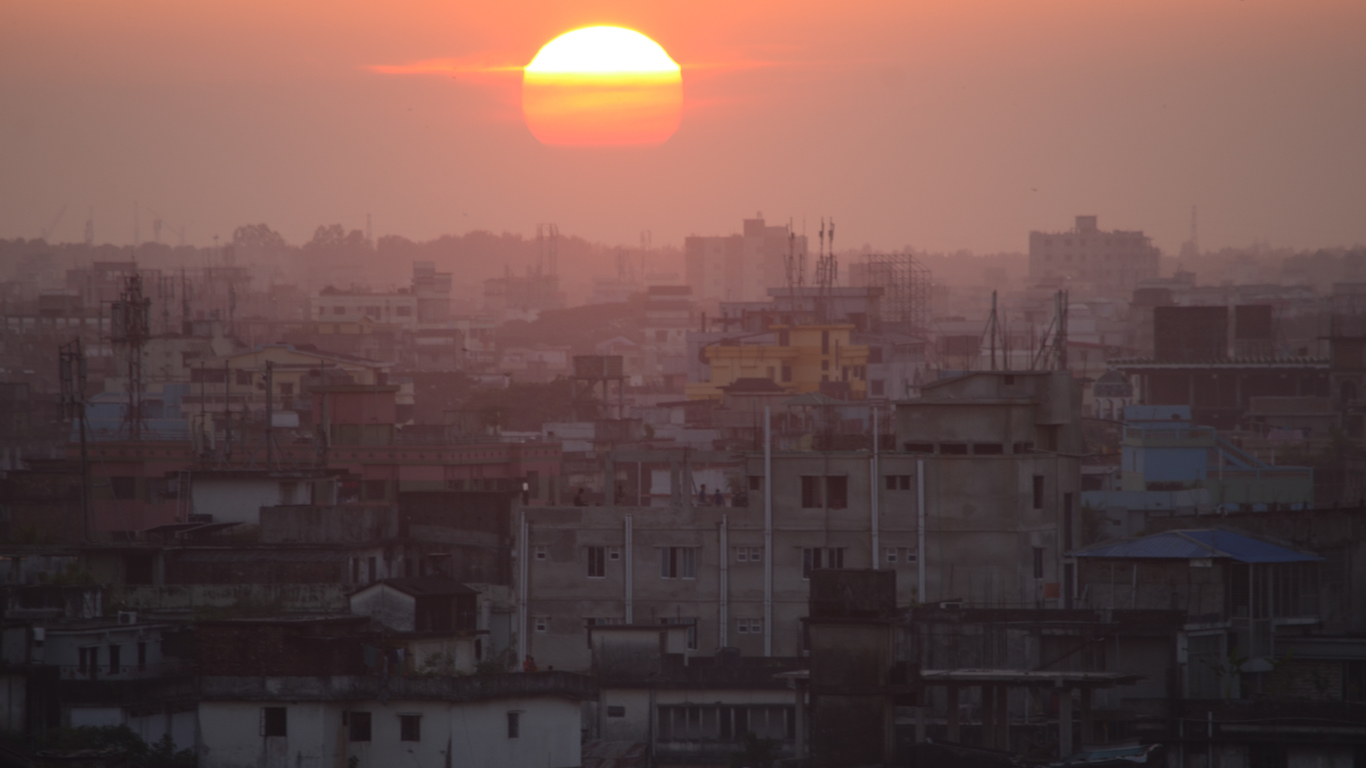
8. Bangladesh
> GDP per capita: $3,340
> Pop. exposed to unsafe air pollution levels: 100.0%
> Pct. protected land: 3.4%
Poor environmental conditions are taking a toll on the health of the Bangladeshi population. A very large share of the country’s water is untreated — a basic necessity taken for granted in most developed nations. Untreated water is especially problematic in Bangladesh as arsenic, a highly toxic mineral, occurs naturally in the country’s groundwater.
Poor water quality is not the only environmental hazard in Bangladesh. The entire population is exposed to air pollution exceeding safe levels as defined by the World Health Organization. The WHO estimates that 144,477 Bengalis died due to indoor or outdoor air pollution in 2012.
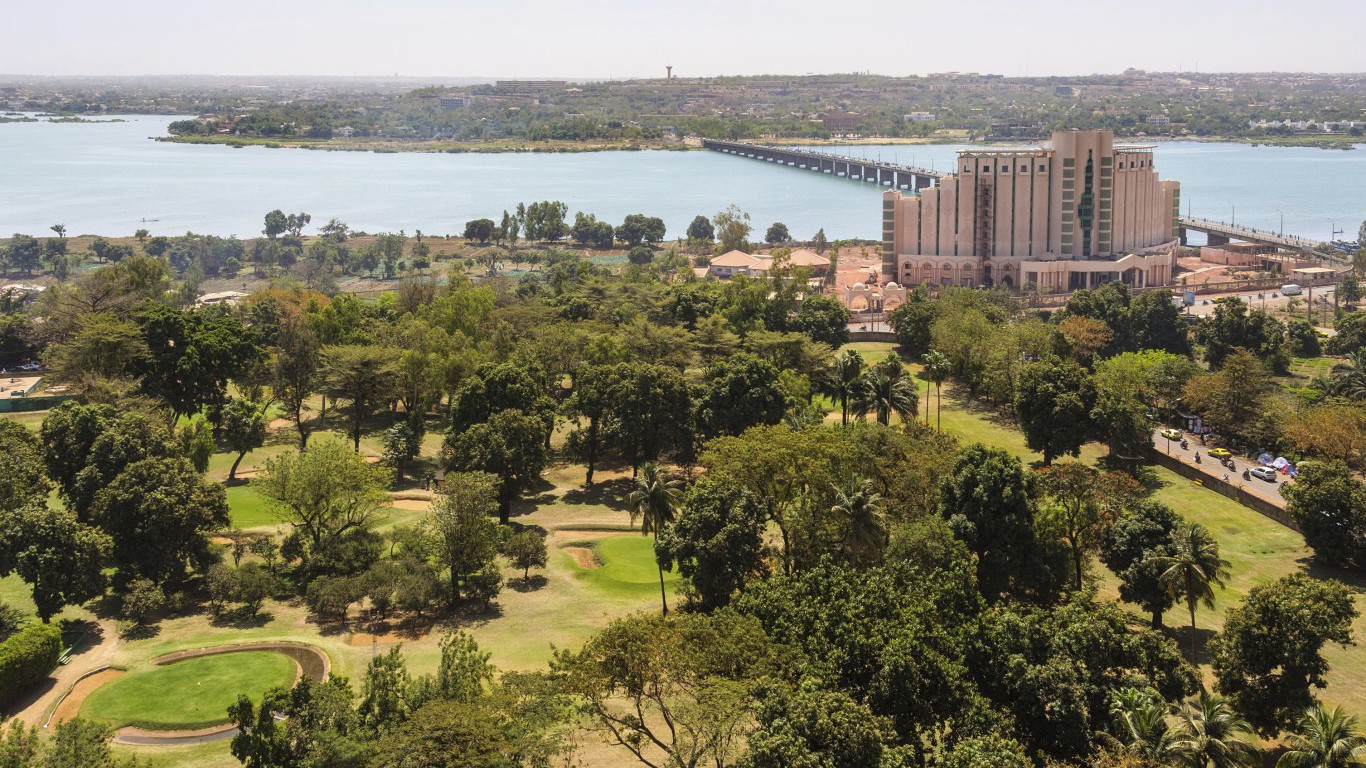
7. Mali
> GDP per capita: $2,028
> Pop. exposed to unsafe air pollution levels: 100.0%
> Pct. protected land: 8.4%
Like many of the least environmentally conscious countries, Mali is in Sub-Saharan Africa and heavily dependent on agriculture. Agriculture accounts for some 41% of the country’s total economic output, a larger share than all but a handful of other nations.
Poor environmental policy and controls are likely taking a toll on the health of Mali’s population. Just 56% of Malians have access to treated drinking water, and 100% of the population is exposed to air pollution levels that exceed safety standards outlined by the World Health Organization.
[in-text-ad-2]

6. Chad
> GDP per capita: $2,176
> Pop. exposed to unsafe air pollution levels: 100.0%
> Pct. protected land: 17.8%
Chad is one of only two countries with available data in which agriculture accounts for more than half of its GDP. A heavy reliance on agriculture is the hallmark of a developing nation, and, like many developing nations, Chad faces problems due to severe pollution. The Institute for Health Metrics and Evaluation estimates that the entire country’s population is exposed to levels of air pollution beyond global health guidelines.
None of the country’s energy is derived from nuclear or alternative sources. Additionally, only 3.6% of the population has access to clean fuel and technologies for cooking, which contributes to lethal indoor air pollution. According to WHO estimates, indoor and outdoor air pollution was responsible for 20,109 deaths in the country in 2012.
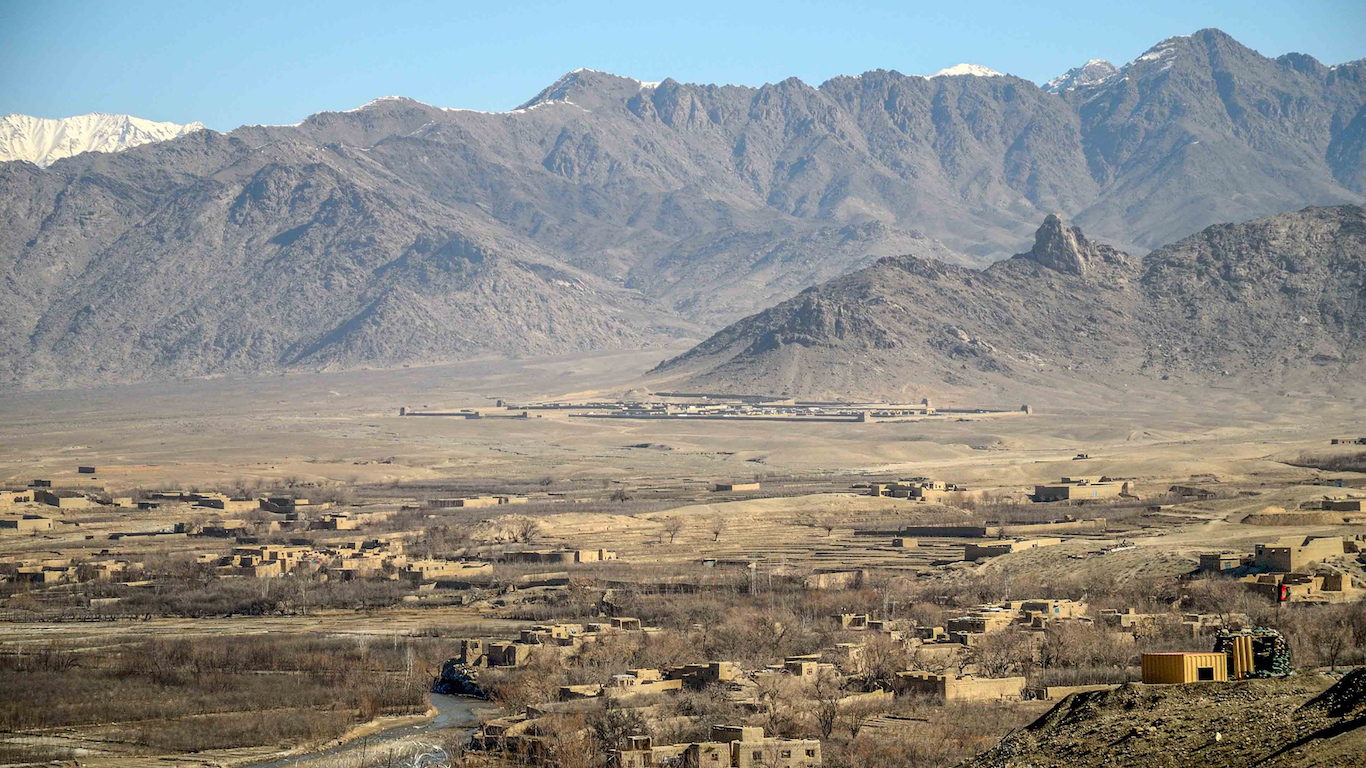
5. Afghanistan
> GDP per capita: $1,925
> Pop. exposed to unsafe air pollution levels: 100.0%
> Pct. protected land: 0.5%
Environmental conservation efforts are often undertaken at the national level, usually requiring an organized system of government with the authority to enact and enforce such policies. In Afghanistan, which has been in the midst of destabilizing conflict for years, violence and factionalization have likely made environmental protection both a non-priority and a logistical impossibility. For example, just 0.46% of the area is protected for environmental reasons under law, and according to the EPI, the country’s ecosystem as a whole is in the worst shape of nearly any country on earth.
[in-text-ad]
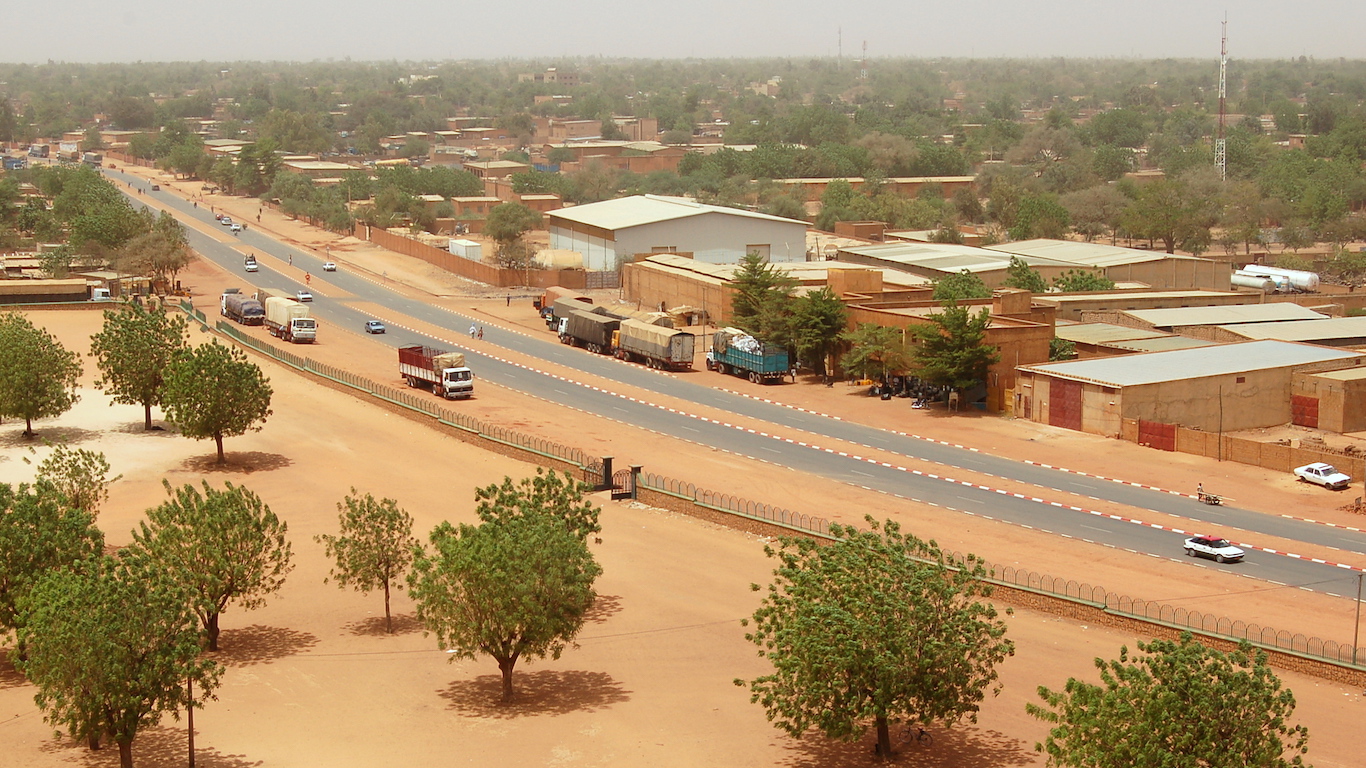
4. Niger
> GDP per capita: $955
> Pop. exposed to unsafe air pollution levels: 100.0%
> Pct. protected land: 17.6%
Stable government is a prerequisite of environmental stewardship. In Niger, sustainable development has taken a backseat to the violence, poverty, and numerous other problems that have plagued the country for most of its independent history. Only 3.1% of Niger residents have cooking fuels and technology that allows them to prepare food without emitting harmful pollutants, compared to 100% of U.S. citizens. Niger has some of the worst pollution in the world overall, and the Institute for Health Metrics and Evaluation estimates that the entire country’s population is exposed to levels of air pollution beyond global health guidelines.
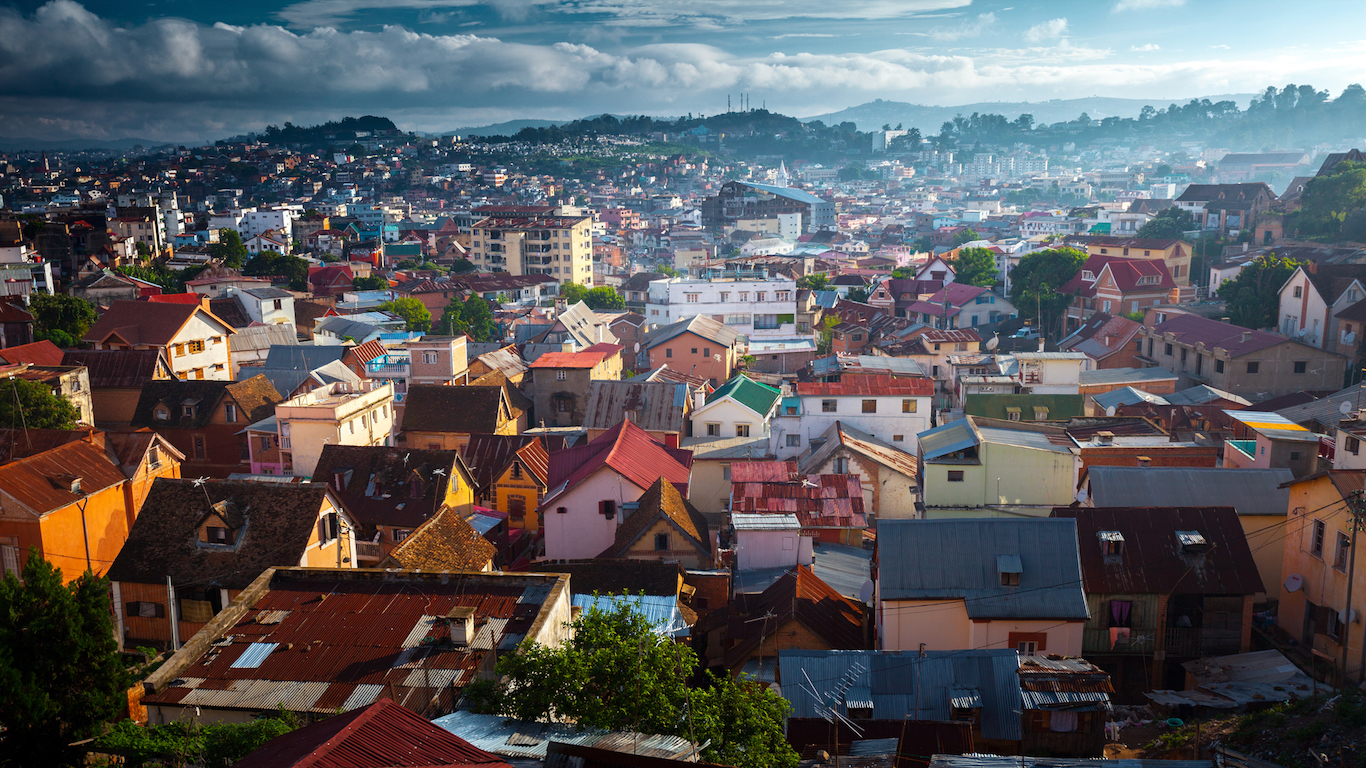
3. Madagascar
> GDP per capita: $1,465
> Pop. exposed to unsafe air pollution levels: 98.7%
> Pct. protected land: 2.0%
According to the World Wildlife Fund, widespread deforestation and illegal trade of Madagascar’s rich wildlife has put many species at risk. There are 120 threatened species on the island nation, the second most after Indonesia. The nation’s government appears to do relatively little to protect its endangered flora and fauna. Less than 2% of Madagascar’s total area is protected.
Like many of the less environmentally-friendly countries on this list, Madagascar is extremely poor, likely resulting in a lack of prioritization for environmental protection seen in more affluent nations.
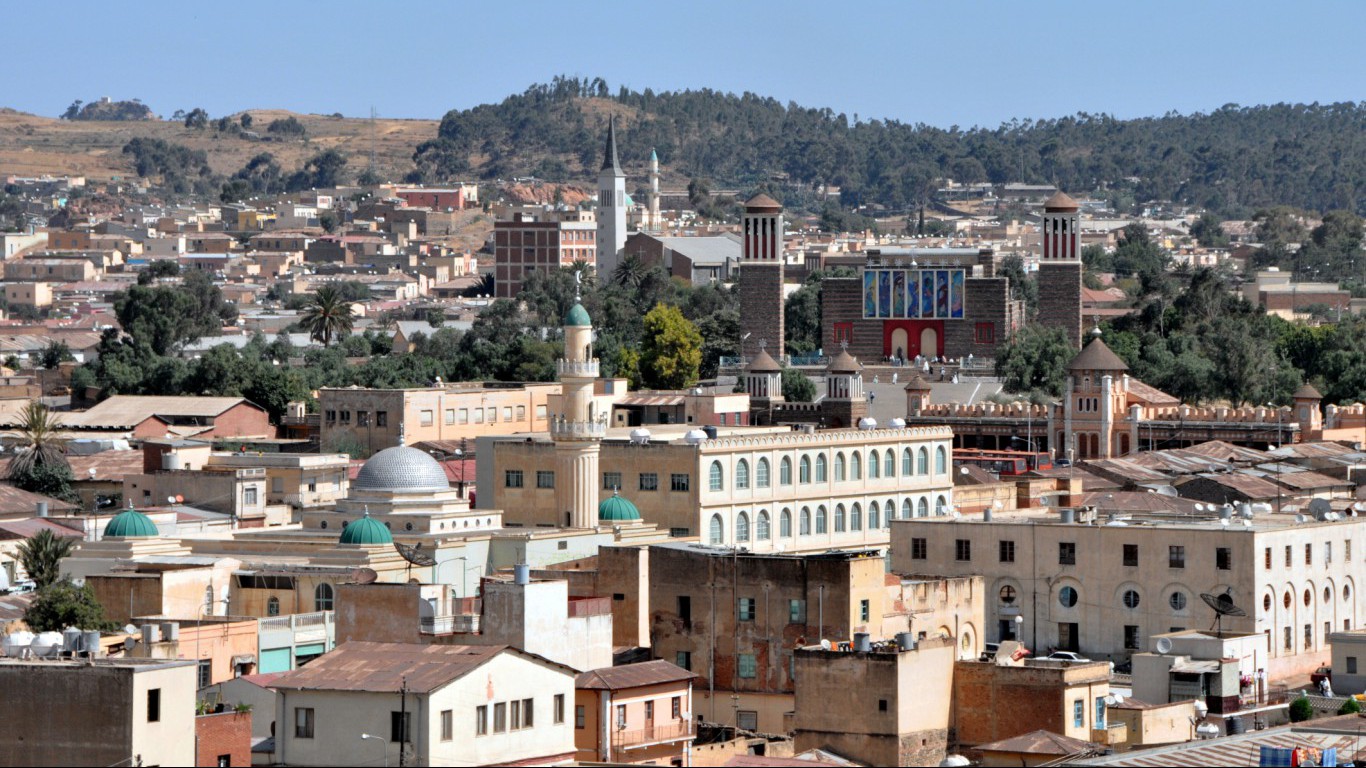
2. Eritrea
> GDP per capita: N/A
> Pop. exposed to unsafe air pollution levels: 100.0%
> Pct. protected land: 3.1%
Sound environmental policy can only be developed and implemented by a well-functioning government, and like many other countries at the bottom of this list, Eritrea has serious governance problems. Only about 3% of the country’s territory, both land and water, is protected. Eritrea has some of the worst pollution in the world overall, and the Institute for Health Metrics and Evaluation estimates that the entire country’s population is exposed to levels of air pollution beyond global health guidelines. Poor environmental conditions extend further as only about one in four people in the country have adequate access to clean drinking water.
[in-text-ad-2]
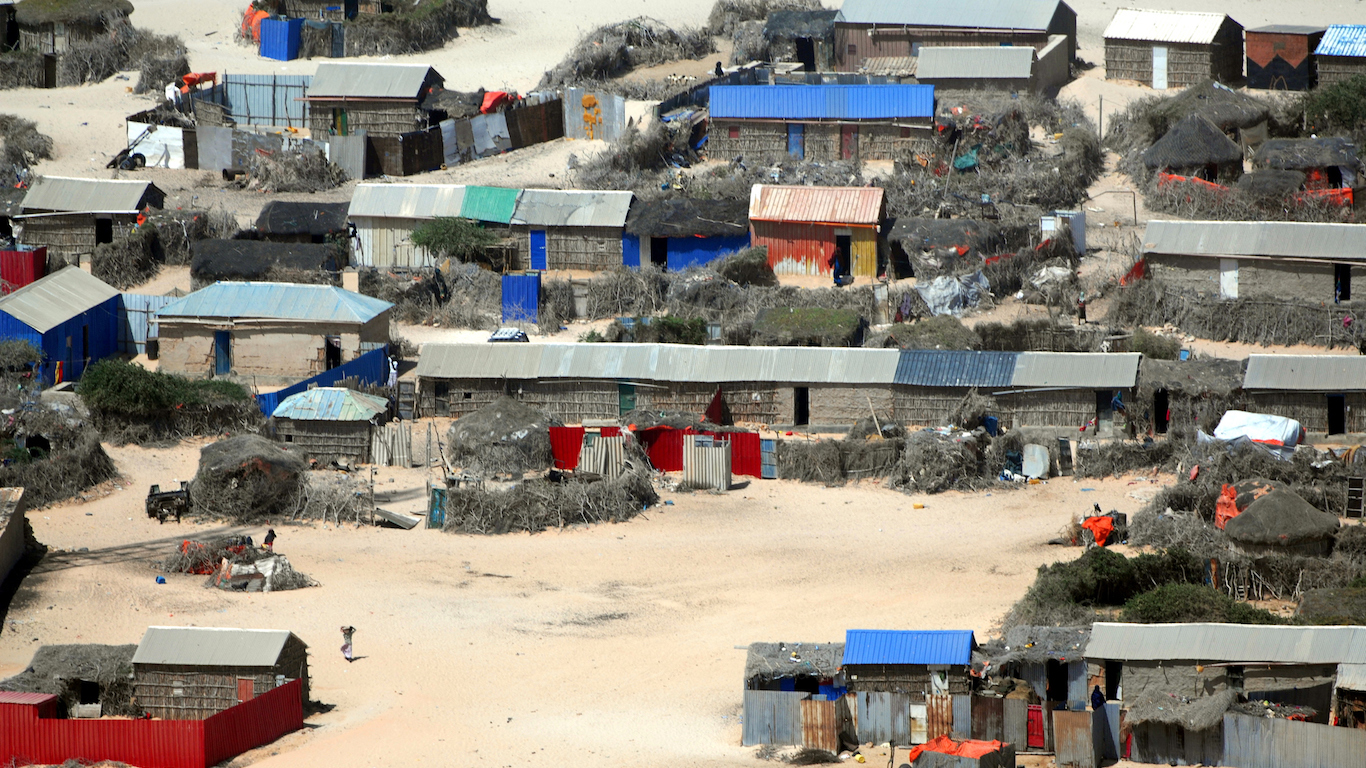
1. Somalia
> GDP per capita: N/A
> Pop. exposed to unsafe air pollution levels: 99.7%
> Pct. protected land: 0.3%
The EPI ranks Somalia as the least environmentally conscious nation in the world. In its discussion of its findings, the organization writes that most of the poor ranking countries are part of a “list of struggling states whose problems extend beyond their inability to sustain environmental and human health.” War-torn, destitute Somalia, which has a 73% poverty rate, certainly falls into this category as well. Less than 1% of Somali territory is protected for purposes of environmental conservation by law. As is the case with many developing nations, while the nation has a minimal carbon footprint, Somalia’s water sanitation system is abysmal. The EPI estimates that clean drinking water is unavailable to practically all of the the country’s 11.3 million residents.
Are you ready for retirement? Planning for retirement can be overwhelming, that’s why it could be a good idea to speak to a fiduciary financial advisor about your goals today.
Start by taking this retirement quiz right here from SmartAsset that will match you with up to 3 financial advisors that serve your area and beyond in 5 minutes. Smart Asset is now matching over 50,000 people a month.
Click here now to get started.
Thank you for reading! Have some feedback for us?
Contact the 24/7 Wall St. editorial team.